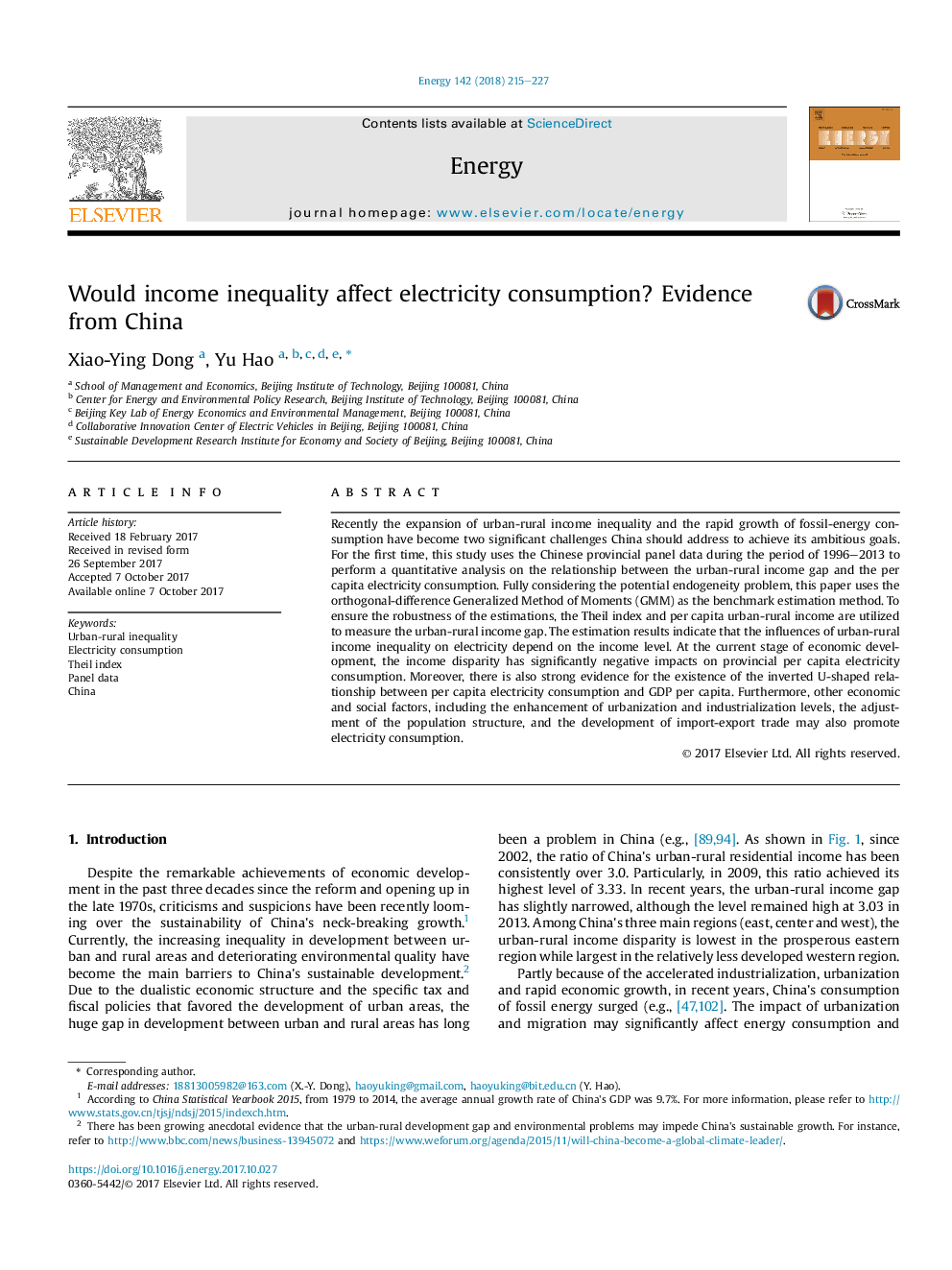| Article ID | Journal | Published Year | Pages | File Type |
|---|---|---|---|---|
| 8072479 | Energy | 2018 | 13 Pages |
Abstract
Recently the expansion of urban-rural income inequality and the rapid growth of fossil-energy consumption have become two significant challenges China should address to achieve its ambitious goals. For the first time, this study uses the Chinese provincial panel data during the period of 1996-2013 to perform a quantitative analysis on the relationship between the urban-rural income gap and the per capita electricity consumption. Fully considering the potential endogeneity problem, this paper uses the orthogonal-difference Generalized Method of Moments (GMM) as the benchmark estimation method. To ensure the robustness of the estimations, the Theil index and per capita urban-rural income are utilized to measure the urban-rural income gap. The estimation results indicate that the influences of urban-rural income inequality on electricity depend on the income level. At the current stage of economic development, the income disparity has significantly negative impacts on provincial per capita electricity consumption. Moreover, there is also strong evidence for the existence of the inverted U-shaped relationship between per capita electricity consumption and GDP per capita. Furthermore, other economic and social factors, including the enhancement of urbanization and industrialization levels, the adjustment of the population structure, and the development of import-export trade may also promote electricity consumption.
Related Topics
Physical Sciences and Engineering
Energy
Energy (General)
Authors
Xiao-Ying Dong, Yu Hao,
